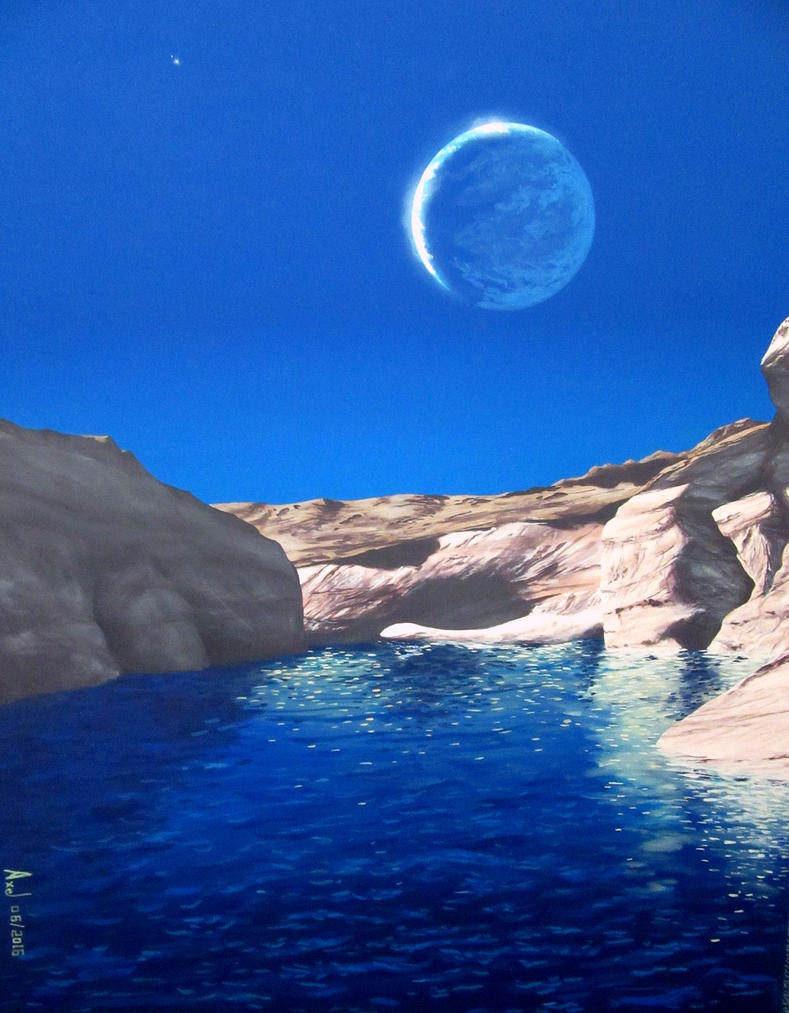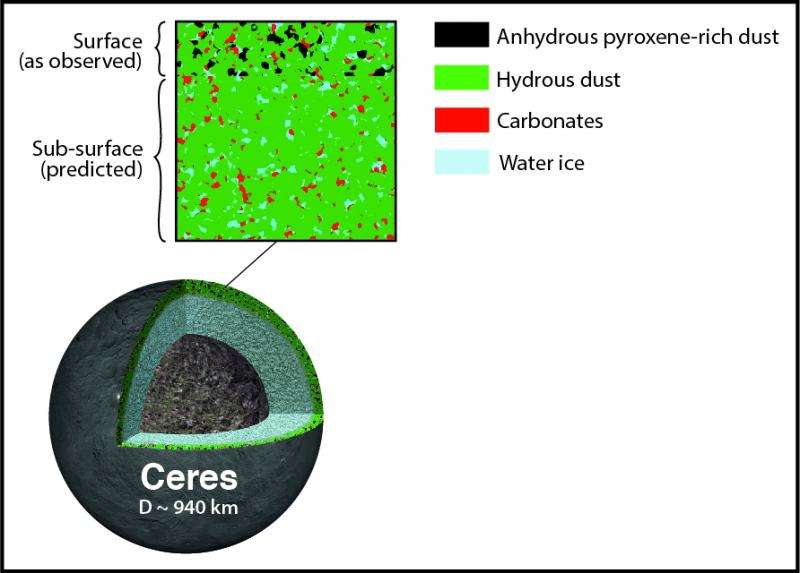New Mars Forums
You are not logged in.
- Topics: Active | Unanswered
Announcement
#26 2017-10-20 09:57:28
- Antius
- Member
- From: Cumbria, UK
- Registered: 2007-05-22
- Posts: 1,003
Re: The Moon
Here's a strange off the wall thought: Could we ever get to the point of making an MCP suit that was easy / convenient enough for human beings to carry out most of their working tasks in it? i.e. about as easy to put on and take off as any other piece of clothing? If so, then we might reasonably spend much of our working time in vacuum. The only air needed would be that we put into buildings, which would be optimised to get the most usable space per unit volume.
Offline
Like button can go here
#27 2017-10-20 10:26:51
Re: The Moon
If you had some kind of fabric that tightened automatically when a zipper was pulled (or something like that) you could probably make it pretty easy to take on and pull off, but you would also want it to be very safe and it's harder to figure out what would be necessary for that without lived experience in those suits
-Josh
Offline
Like button can go here
#28 2017-10-20 20:30:36
- SpaceNut
- Administrator
- From: New Hampshire
- Registered: 2004-07-22
- Posts: 29,824
Re: The Moon
Well while we are mining the inside chamber for man we can process the aluminum into the liner for the chamber and make it such that we can dehumidify the chamber as needed to keep it from dripping.
Offline
Like button can go here
#29 2017-10-21 13:13:32
- SpaceNut
- Administrator
- From: New Hampshire
- Registered: 2004-07-22
- Posts: 29,824
Re: The Moon
Newly-discovered lunar cave would be great for a moon base
Nothing quite captures the 2017 mood to leave Earth forever like dreaming about moon bases. Last month, space agencies from Russia and the US jointly announced plans to collaborate on such a satellite colony. But today's discovery might bring that vision closer to reality. Japan's space agency found a large cave underneath the lunar surface that seems like prime area for a human outpost.
Japan's Selenological and Engineering Explorer (Selene) probe discovered a 50-meter wide by 50-meter deep opening underneath the Marius Hills region using a radar system designed to peer underground. After more readings, the Japan Aerospace Exploration Agency (Jaxa) surmised that the chasm was 50 km (31 miles) long by 100 meters wide, structurally sound and filled with rocks that might contain water. They theorize that it was a tube carved by lava during volcanic activity 3.5 billion years ago.
Lava tubes are well-suited for human settlements, Jaxa senior researcher Junichi Haruyama told The Guardian. The tubes "might be the best candidate sites for future lunar bases, because of their stable thermal conditions and potential to protect people and instruments from micrometeorites and cosmic ray radiation," Haruyama said. Their location underground also shields denizens from the surface's wild temperature swings and radiation from the sun's UV rays.
Offline
Like button can go here
#30 2018-07-27 22:40:47
Re: The Moon
I just watch the movie Moon (which was excellent, by the way) and it got me thinking about the Moon.
Specifically, Terraforming.
This is something we've been talking about occasionally for a long while but which I want to give another whack at.
The Moon might be smaller than Earth, but it's still quite big. Here's some comparisons:
The Moon is:
Twice as big as Russia
Four times bigger than the United States, Canada, or China (all are roughly the same size)
Eight times bigger than the European Union
Twelve times bigger than India
As big as the entire continents of Asia or Africa
22 times bigger than Alaska, 54 times bigger than Texas, 90 times bigger than California, and 271 times bigger than New York State
1/4 as big (in terms of surface area) as Mars
1/12 as big (in terms of surface area) as Earth, including oceans
It's really big! And it's close, too, which matters a whole lot.
Anyway, the question is what we can do to make it more habitable. There was a thread a long while back about levels of terraforming (I can't seem to find it) but anyway even a bit of terraforming might help make the planet more inhabitable.
For comparison's sake, one full atmosphere of gas on the Moon would have a mass of about 2.4e18 kg.
While there have been some recent discoveries of water on the Moon, there's not all that much compared to the amount you'd need for seas or an atmosphere.
I suppose the way to go about it would be to bombard the Moon with little chunks of ice from the Kuiper belt. Actually methane and ammonia would be better, probably, because they might react with the regolith and then release Nitrogen, Carbon, and water, and we need all of those.
I don't have too many original ideas but it would be great to be able to sail the Sea of Tranquility in the open air and look up and see the Earth shining in the sky at dusk.
Here's some artist renderings of a terraformed moon!
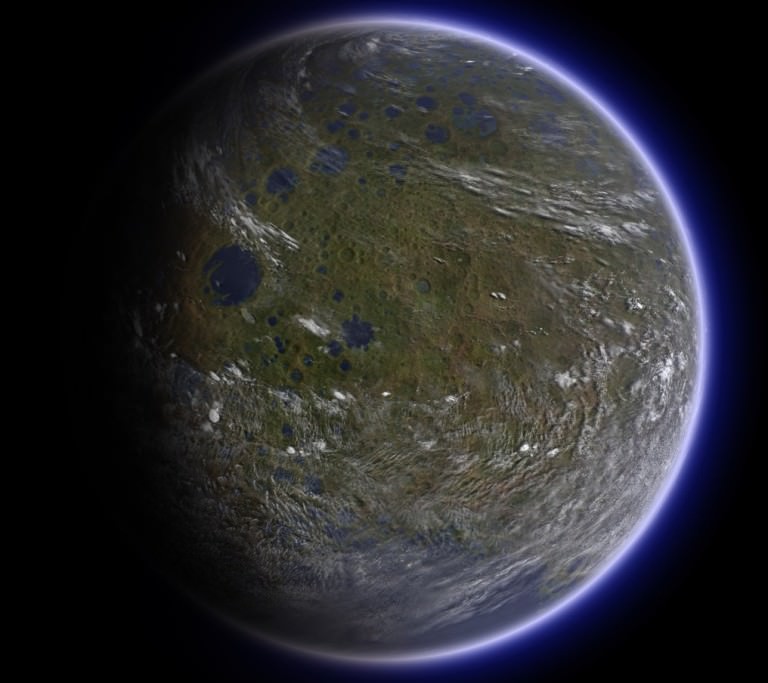
From Universe Today
-Josh
Offline
Like button can go here
#31 2018-12-09 19:15:35
- knightdepaix
- Member
- Registered: 2014-07-07
- Posts: 239
Re: The Moon
Exchange of gases by vapor pressures?
Atmosphere of the Moon is very thin to the point of vacuum from the Earth point of view. Venus has an abundance of carbon dioxide. Would taking carbon dioxide and exchange it for methane argon, helium, neon, nitrogen, sodium and potassium from Lunar atmosphere? Maybe maintaining below the critical temperature and pressure of carbon dioxide, methane, argon, helium, neon and nitrogen are turned into gases liquids or fluids and thus float to the top of an exchange chamber. Carbon dioxide fluids sinks to the bottom. By maintaining similar vapor pressures, nitrogen argon helium and neon are mined and carbon dioxide from Venus are released on Moon.
Carbon monoxide hydrogen sodium and potassium reduce chemically carbon dioxide after the latter leaves the exchange chamber into a reaction chamber into sodium and potassium formate, acetate and oxalate solids. All mined solid and gases are delivered to Mars or Venus.
At last carbon dioxide fluid is recovered for its energy of pressurization and released to the lunar atmosphere as a gas. The vapor pressures of lunar atmospheric gases entering the chambers are maintained at the release of carbon dioxide gas. That means much less carbon dioxide amount are needed to replace the lunar atmospheric gases.
Are methane, silane (SiH4), carbon dioxide, carbon suboxide (C3O2), carbon disulfide (CS2), carbonyl sulfide (COS) and cyanogen (C2N2) greenhouse gases on Moon? If so, how harmful would releasing these gases be even if they help global warming on Mars?
Last edited by knightdepaix (2018-12-09 20:54:50)
Offline
Like button can go here
#32 2018-12-10 16:39:14
Re: The Moon
Hey knightdepaix,
If I understand correctly, this is what you're proposing:
Transport the CO2 from Venus to the Moon
Send some gases back to Venus from the Moon?
Also send some gases to Mars?
Frankly I don't really understand what you're trying to say there.
Fundamentally, yes, bringing CO2 from Venus to the Moon would be a great step towards terraforming the Moon. It's true that CO2 is a greenhouse gas. On the other hand, water is also a greenhouse gas and likely to be in short supply. What the actual temperature would be if you introduced 300 mb of CO2 to the Moon I do not know.
Even if the global temperature is high, the poles will be cooler. If there is sufficient water, nitrogen, phosphorus, etc. to support ecosystems at the poles they will slowly fix the CO2 into biomass and Oxygen. This will lower global temperatures and increase the region of viability in an accelerating process. Come back in a few thousand years and the Moon might be a comfortable place.
-Josh
Offline
Like button can go here
#33 2018-12-10 18:11:42
- louis
- Member
- From: UK
- Registered: 2008-03-24
- Posts: 7,208
Re: The Moon
The silvery moon has too much cultural significance I feel for us to terraform it.
The main rationale for terraforming Mars is that we could create a safe second home on Mars that would protect the human species from extinction if something cataclysmic happend on Earth. But the Moon is so close to Earth that a truly cataclysmic event like some huge interstellar body smashing into the Earth could also take out civilisation on a terraformed Moon.
With the Moon as well, you have to cope with the 14 day/night cycle, though that could probably be changed in the future with solar reflectors and masks.
The Moon I see more as a leisure destination. The Apollo landing sites will be huge draws for tourists. A lunar hotel, lunar rover expeditions, lunar golf course and so on will all have their attractions. We can have some paraterrformation of natural or artificial gorges, without ruining the view from Earth.
Let's Go to Mars...Google on: Fast Track to Mars blogspot.com
Offline
Like button can go here
#34 2018-12-11 10:42:26
Re: The Moon
I would agree that there's some historical value in retaining the Moon's current appearance. But I would argue that there's much more value in creating a Moon's worth of habitable land. Per my post above, the Moon has has much land area as the US, Canada, China, the EU, and India combined. The value of that much land is simply immense, incalculably so, both in the sense of profitability and in the sense of its value to humanity. And on top of that it's just three days' journey from here to there on a minimum energy trajectory, less if you have better engines (it's vaguely conceivable, although not with current technology, that you could go to the Moon for a weekend).
It's true that the Moon is quite beautiful as it is, but it's also true that living worlds are quite beautiful.
It's true that there are huge challenges in remaking the Moon (as there are in terraforming any world), including "known unknowns" (Where is the water and gas inventory to come from? What do you do about the low gravity and slow rotation?) and "unknown unknowns". However, it's such an incredible project that it will surely be worth it if you set your time horizons long enough.
-Josh
Offline
Like button can go here
#35 2018-12-11 18:01:26
- SpaceNut
- Administrator
- From: New Hampshire
- Registered: 2004-07-22
- Posts: 29,824
Re: The Moon
So do all the work on the dark side of the moon if appearance is a must.
With the venus, mars, moon and earth for economic swapping of materials as trade for what they lack; the common sense would be is that is a business model for getting more people into space as its not science and super high educational level required.
Offline
Like button can go here
#36 2019-01-15 16:48:07
- knightdepaix
- Member
- Registered: 2014-07-07
- Posts: 239
Re: The Moon
https://en.wikipedia.org/wiki/Atmosphere_of_the_Moon
The atmosphere of moons has very thin argon, helium, neon, sodium, potassium and hydrogen. Does it make sense to mine all of them --- solidification or liquification --- and replace the same vapor pressure with ozone? Surface mining of helium-3 in regolith could involve processing silicates. Oxygen in silicates could be electrolyzed and converted into ozone.
Offline
Like button can go here
#37 2019-01-15 17:14:08
- SpaceNut
- Administrator
- From: New Hampshire
- Registered: 2004-07-22
- Posts: 29,824
Re: The Moon
Well we could ask China's robotics if they could as they are the only ones exploring at this time.
http://newmars.com/forums/viewtopic.php?id=2071
edit:
clarifying Atmosphere and how it was created for the moon....
It is mostly from impacts and the apollo era landings what we are seeing right now or is there something else happening on the moon which is creating it currently.?
Last edited by SpaceNut (2019-01-16 18:16:00)
Offline
Like button can go here
#38 2019-01-16 02:52:50
- knightdepaix
- Member
- Registered: 2014-07-07
- Posts: 239
Re: The Moon
Is it mostly from impacts and the apollo era landings what we are seeing right now or is there something else happening on the moon?
Sorry, I may lose you there. What information do you refer to?
Offline
Like button can go here
#39 2019-01-19 20:27:24
- SpaceNut
- Administrator
- From: New Hampshire
- Registered: 2004-07-22
- Posts: 29,824
Re: The Moon
2019 lunar eclipse: 5 things to know about the 'super blood wolf moon'
Just howling at the moon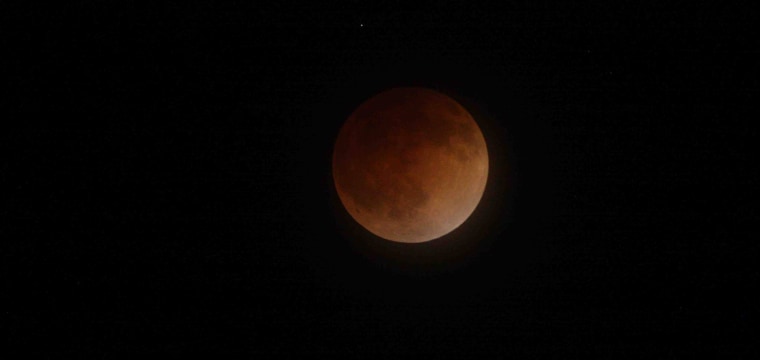
Offline
Like button can go here
#40 2023-09-07 05:10:19
- Mars_B4_Moon
- Member
- Registered: 2006-03-23
- Posts: 9,776
Re: The Moon
Can The Moon Be Terraformed?
Offline
Like button can go here
#41 2023-09-07 06:05:10
- Void
- Member
- Registered: 2011-12-29
- Posts: 9,028
Re: The Moon
An interesting article Mars_B4_Moon.
Given time, energy, and the ability to manipulate objects, eventually the Moon could be converted into an alternate world. But sometimes there may be an "Alien" solution to a problem.
,
Supposing it was desired to inhabit parts of the Moon early on, machinery in orbit could project energy to those parts in the dark periods.
That could be microwaves and also lasers and most particularly light reflections from mirrors. I would say that this could be very valuable to make things easier.
Here is a quick try: 
It is more a schematic and not, of course a engineering diagram of any precision.
Done.
Last edited by Void (2023-09-07 06:13:22)
Is it possible that the root of political science claims is to produce white collar jobs for people who paid for an education and do not want a real job?
Offline
Like button can go here
#42 2023-09-07 21:27:17
- Calliban
- Member
- From: Northern England, UK
- Registered: 2019-08-18
- Posts: 4,239
Re: The Moon
Regarding the dropping of things onto the lunar surface without the use of rockets. We have a planet with no atmosphere and no magnetic field to speak of. How about slowing payloads down by deploying some sort of parachute and having a ground based plasma accelerator fire a beam of ions at the incoming parachute? Maybe something that is easily ionised like potassium, accelerated using an electrostatic accelerator? Multiple accelerators would aim at the incoming parachute, creating a plasma wind that decelerates it.
"Plan and prepare for every possibility, and you will never act. It is nobler to have courage as we stumble into half the things we fear than to analyse every possible obstacle and begin nothing. Great things are achieved by embracing great dangers."
Offline
Like button can go here
#43 2023-09-08 17:00:14
- Void
- Member
- Registered: 2011-12-29
- Posts: 9,028
Re: The Moon
Interesting stuff. I am aware that the Neumann Drive might use Phosphorus and most elements.
The Plasma Accelerator you have in mind.... Do you have more learning materials?
I have been hard pressed to obligations for a few days, so I may continue on this later.
Done.
Is it possible that the root of political science claims is to produce white collar jobs for people who paid for an education and do not want a real job?
Offline
Like button can go here
#44 2023-09-18 07:09:27
- Calliban
- Member
- From: Northern England, UK
- Registered: 2019-08-18
- Posts: 4,239
Re: The Moon
Pits on the moon.
https://m.youtube.com/watch?v=sIi17u_N8yQ
"Plan and prepare for every possibility, and you will never act. It is nobler to have courage as we stumble into half the things we fear than to analyse every possible obstacle and begin nothing. Great things are achieved by embracing great dangers."
Offline
Like button can go here
#45 2023-09-18 09:42:18
- Void
- Member
- Registered: 2011-12-29
- Posts: 9,028
Re: The Moon
A good video, Calliban.
It seems that under the regolith rubble on the surface of the Moon, Mars, and likely Mercury are layer after layer of lava flows. And some sediments of some sort perhaps between those layers.
I have previously wondered what happened to the lava tubes of layers lower down. Are they all collapsed, or are some encapsulated under the new layers?
The shield volcano formations may date from billions of years ago. Are there lava tube bubbles encased in them?
Could these deep ones if they exist in any way record conditions of a more habitable Mars which seems may have existed previously?
I simply don't know, of course.
--------------
As for the Moon, I think we have some work to do to bypass archaic notions left over from the early days of spaceflight of humans. These notions include most wort needs to be done by humans in spacesuits, and also that without the polar ice deposits space travel will be too expensive, and even impossible.
The Falcon 9 system I think has dropped the price to 1/5 of payload to LEO's prior cost..
I think it may be conservative to suppose that Starship may drop it to 1/5th of Falcon 9.
I have discovered more of my ignorance: https://space.stackexchange.com/questio … g-into-leo
https://www.futuretimeline.net/data-trends/6.htm
Image Quote: 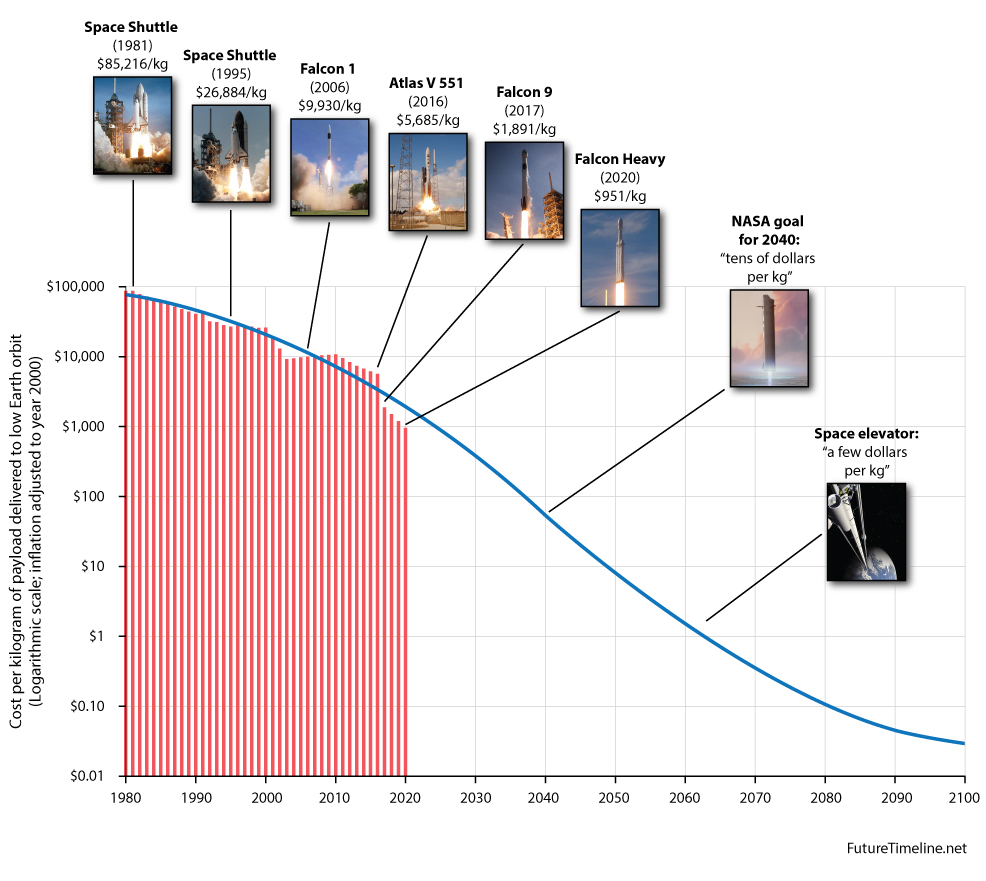
So, Elon Musk expresses an optimistic number: https://wccftech.com/elon-musk-starship … ght%20rate. Quote:
Starship's stated design goal for the time being aims to put 150 tons in LEO, which is the lowest orbit for a launch vehicle to access. Musk's comments made in May had estimated a $10/kg payload delivery cost for a 150-ton payload ($1.5 million per mission) and also factored in a high flight rate.
So, I would consider $10/kg to be aspirational. And I don't wish to do a put down about it at all.
But if it actually turns out to be $200/kg, even then, it is a new reality. In this reality, it becomes much more sensible to import needed chemicals to the location of a lava tube. There could be a lesser dependency on polar deposits.
Water recycling on the ISS: Starship's stated design goal for the time being aims to put 150 tons in LEO, which is the lowest orbit for a launch vehicle to access. Musk's comments made in May had estimated a $10/kg payload delivery cost for a 150-ton payload ($1.5 million per mission) and also factored in a high flight rate. The number claimed is
98 percent
I am supposing that over time and on the Moon, the number could be tightened up even more. So, once you bring water and CO2 in, those are likely to last a pretty long time. I am also going to suppose that it may be possible to extract water from the regolith using a hole flow of electric currents. Economically and to a sufficient extent? Not known yet.
Lava Tubes suggest a value, but they do not occur in convenient locations to the polar deposits, so having better methods is desirable to maintain life support in and around them.
Two more tricks might be included:
1) Do what the Martian did, burn fuel to make water. If you have a ship that lands with some extra Methane for instance that can give assistance if the ship gets in trouble. But before take-off you could extract the excess Methane, and burn it to create Water and CO2.
3) Lithobraking/Hard Landing substances. A ship on approach to landing could eject things like Tar, Carbon, and even water and/or CO2 ice super cooled on to the Lunar surface. For the ice, you would want to do it in the dark of night.
This would allow the ship to have weaker landing legs, and to throttle down it's engines a bit more. Also, it may conserve propellants to some extent. And again, having a means to dump cargo might be useful in emergency situations.
https://en.wikipedia.org/wiki/Lunar_lava_tube Image Quote: 
If a good long lava tube extended from such a Skylight, then we might have a robot factory in it, and a landing pad in the Skylight. That is a thermally protected area and also has enhanced radiation protection.
Of course we have to harden things to handle crashes and explosions.
Berms put into the lava tube made of regolith may help with that.
I am supposing also that 3D sintering may allow the building of additional structures some on the surface as well, perhaps connecting to the lava tube system, if one exists.
While at first chemicals needed may come from Earth, over time some may come from polar deposits as well, and then even from asteroids.
Done.
Last edited by Void (2023-09-18 10:36:12)
Is it possible that the root of political science claims is to produce white collar jobs for people who paid for an education and do not want a real job?
Offline
Like button can go here
#46 2023-09-20 07:41:34
- Void
- Member
- Registered: 2011-12-29
- Posts: 9,028
Re: The Moon
This is a fine contribution from China: https://www.msn.com/en-us/news/technolo … 2aa07&ei=7 Quote:
Hidden structures' discovered deep beneath the dark side of the moon
Story by Harriet Brewis •
55m
It is going to be interesting to find out what is "Down Below". Some people think that the Moon may have had an atmosphere of a bit of significance several times in its history.
One article I read is that as some magma cooled and solidified, it would push volatile materials into the remaining lava. So, not all lava is going to be alike. The later lavas are possibly likely to have fewer heavy materials in them.
Done.
Last edited by Void (2023-09-20 07:45:39)
Is it possible that the root of political science claims is to produce white collar jobs for people who paid for an education and do not want a real job?
Offline
Like button can go here
#47 2024-02-21 11:22:28
- Void
- Member
- Registered: 2011-12-29
- Posts: 9,028
Re: The Moon
I did not want to start a new topic for this. Someone else can if they wish:
Dr. Zubrin seems to have a bit to do with it.
MoonDAO:
https://www.moondao.com/
https://www.bing.com/videos/riverview/r … &FORM=VIRE Quote:
Dr. Robert Zubrin of the Mars Society on MoonDAO Live!
Done
Last edited by Void (2024-02-21 11:23:46)
Is it possible that the root of political science claims is to produce white collar jobs for people who paid for an education and do not want a real job?
Offline
Like button can go here
#48 2024-02-22 13:23:37
- Void
- Member
- Registered: 2011-12-29
- Posts: 9,028
Re: The Moon
I think this can be appropriate here: https://www.reddit.com/r/IsaacArthur/co … _the_moon/
Quote:
r/IsaacArthur
IsaacArthurCan We Terraform The Moon?
I agree that the Moon may respond well to extreme automation methods, including robots.
Done
Last edited by Void (2024-02-22 13:26:22)
Is it possible that the root of political science claims is to produce white collar jobs for people who paid for an education and do not want a real job?
Offline
Like button can go here
#49 2024-02-22 19:32:00
- Calliban
- Member
- From: Northern England, UK
- Registered: 2019-08-18
- Posts: 4,239
Re: The Moon
One idea I can remember reading some years back was to divert an icy cometary body into a collision course with the moon. This would form a water vapour atmosphere, which would gradually dissociate under UV light into H2/O2, with the former escaping into space. UV photolysis would take centuries to produce a breathable atmosphere. But it is possible in principle. One problem with creating a long term biosphere is that the lunar crust is both dry and geologically stable. Anhydrous minerals would tend soak up water like a sponge and there is no techtonic activity to recycle the trapped water.
The amount of energy needed to bring enough water to the moon from the outer solar system is enormous of course. So huge that it seems daunting from where we are now. Maybe we will have something like the Epstein fusion drives of the Expanse series in a few centuries. If so, then building ships that can transport the teratonnes of ice needed through dV of 10+ km/s, might actually be feasible. But this is a scale of engineering which is far beyond anything that our puny civilisation can seriously contemplate today. Then again, a seventeeth century man would have struggled to imagine the capabilities of industrial society today.
Last edited by Calliban (2024-02-22 19:32:58)
"Plan and prepare for every possibility, and you will never act. It is nobler to have courage as we stumble into half the things we fear than to analyse every possible obstacle and begin nothing. Great things are achieved by embracing great dangers."
Offline
Like button can go here
#50 2024-02-22 20:59:43
- Void
- Member
- Registered: 2011-12-29
- Posts: 9,028
Re: The Moon
I think that that is a proper view of it Calliban.
To get things from there you might beam power or have effective fusion power.
I think that the first 1% of total will do far more good for the Moon than the last 90%, sort of a curve?
But lets have a look at Ceres. Not too ridiculously far away.
If it is of the nature expected in this material, then there can be some hope, at least for the first 1%.
http://newmars.com/forums/viewtopic.php … 87#p206487
Quote:
Relating to the previous two posts, I thought these additional articles were worth a look:
https://phys.org/news/2017-01-ceres-ast … laged.htmlJANUARY 20, 2017
Observations of Ceres indicate that asteroids might be camouflaged
by SETI InstituteImage Quote:
Isaac Arthur is big on beamed power. He is not afraid to think big. I even have some trouble entertaining some of his furthest thinking. Guess I am showing my age.
Power beams will spread, but you could overlap many of them. Suppose you sent power with Ceres as the target receiver itself. Just for speculation, let's say it would be microwaves, and you might have built a receiver in the L1 of Ceres. A very big one. Alternately it might be laser light.
But let's say you mine organic stuff from Ceres and send it off with a power system that comes from the L1 power station.
The idea of photon sails is considered for interstellar, but here I am presuming that we (That is the inheritors), could use a solar moth instead as power beams might focus on a small area for a small period of flight, the start of flight.
https://isaacarthur.net/video/solar-mot … lar-sails/
So, "We" have built a large ship to contain some volatiles, perhaps some Ammonia Water, and some CO2.
The power beams from the inner system begin sending power to the Ceres L1 power station, which is very big, and that then powers a Laser system with a narrow focus. For a few minutes the rocket pushes very strongly to intercept our Moon.
Upon arrival towards the Moon the ship turns around and Lasers from the Earth/Moon again power it, but it is spraying its plume of Ammonia water, and CO2 at the Moon. If the spread is not too large, it may discharge the gas to the Moon, without an impact of a solid. It may even be that this action would then send it back to Ceres.
It's a try. Probably the inheritors can cook something better up.
But in general, substances such as water and ammonia and CO2 will tend to condense out on the Lunar Shaded crater floors.
If the Moon has a thin atmosphere of O2 perhaps that would tend to have a circulation that would help to move volatiles delivered in this fashion to the poles. Such a very thin O2 atmosphere may actually as well have Ozone which might protect from UV. But the method would not catch all of the delivered gasses.
In this action of mining Ceres, of course you would build lots of habitats for humans and their robots.
Done
Last edited by Void (2024-02-22 21:24:08)
Is it possible that the root of political science claims is to produce white collar jobs for people who paid for an education and do not want a real job?
Offline
Like button can go here
